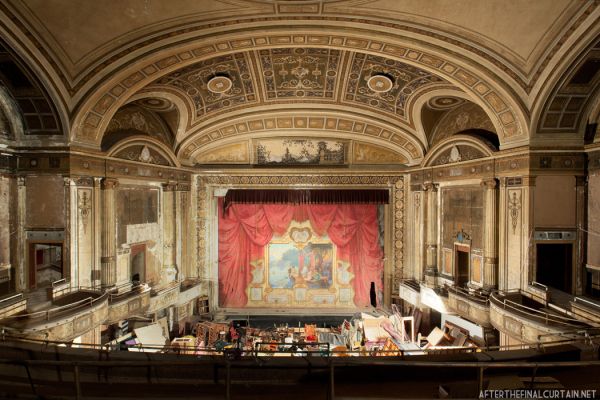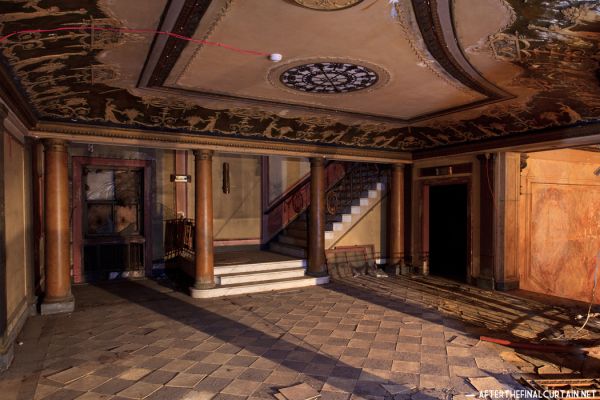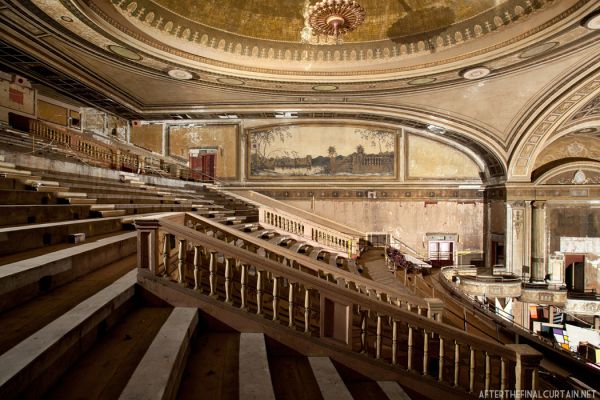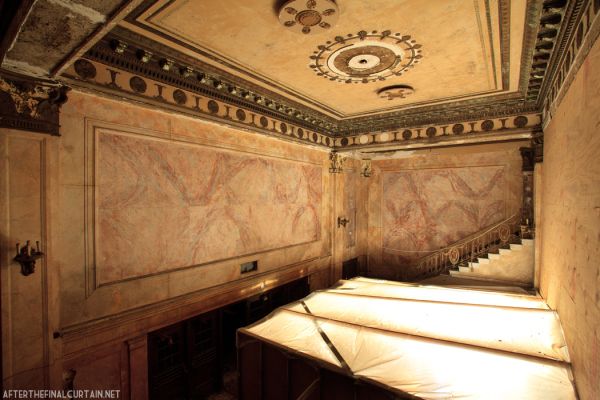Last Chance to Catch NYC's Holiday Notalgia Train
We met the voices of the NYC subway on our nostalgia ride this weekend!

Loew’s Palace Theatre

The Loew’s Palace Theatre opened as the Poli’s Palace Theatre on September 4, 1922 in Bridgeport, Connecticut. Architect Thomas W. Lamb designed the theater for theater mogul Sylvester Z. Poli. Loew’s Poli Theatre sat 3,642 people and was the biggest movie theater in Connecticut at the time and still remains the largest of Bridgeport’s theaters.
After years of being a predominantly vaudeville and silent film theater, the Palace began screening major motion pictures after it was sold to the Loew’s theater chain in 1934. After being sold, the theater changed its name from Poli’s Palace to Loew’s Poli.

However, it was renamed again thirty years later as the Loew’s Palace Theatre. Due to a decline in ticket sales, the Loew’s corporation sold the building in the early 1970s. After showing adult films for a few years, the Palace permanently closed in 1975. Joy Center Ministries, Inc. had the rights to sell or lease portions of the building at the time and intended to rent out the store fronts and turn the theater into a Christian revival center, but the project was put on hold when Bridgeport was discovered to have had a $1.2 million lien on the property due to unpaid taxes. The city took possession of the building in lieu of payment.
Since its closing, the interior of the Palace has been used as a set in several movies, including the 2010 film, All Good Things, starring Ryan Gosling and Kirsten Dunst. The Palace Theatre is currently listed on the National Register of Historic Places. The city of Bridgeport hopes to one day restore the theater to its former glory.
Loew’s Majestic Theatre

The Loew’s Majestic Theatre opened on November 4, 1922 in Bridgeport, Connecticut. Like the Loew’s Palace Theatre, Thomas W. Lamb designed it for theater mogul Sylvester Z. Poli.

Lamb designed the theater in the Neo-Renaissance style, with frescoes of Italian formal gardens in the auditorium. The mezzanine in the lobby area is decorated with a large stained glass mural, which is currently covered with plywood to protect it from damage. The Majestic’s lobby was decorated with real marble, unlike its sister theater, the Palace Theatre, which used imitation marble. Because the Majestic’s lobby is smaller than the Palace’s, it was possible to use more expensive materials and a more ornate style without breaking the budget.


The Majestic was sold, along with the Palace, to Loew’s Theatres Incorporated in 1934. Loew’s Theatre Inc. closed the Majestic Theatre in 1967, and then eventually sold the building in the early 1970s. Both theaters in the complex were reopened and closed several times before their permanent closings in 1975. The Majestic Theater auditorium is currently being used as a storage space for a local cabaret theater company. The city of Bridgeport is seeking proposals to restore the theater to use.

This article is part of our column After the Final Curtain, featuring the photography and writing of Matt Lambros who documents the neglect of America’s greatest theaters on his website afterthefinalcurtain.net
This article compiled and edited by@chelspineda
Subscribe to our newsletter